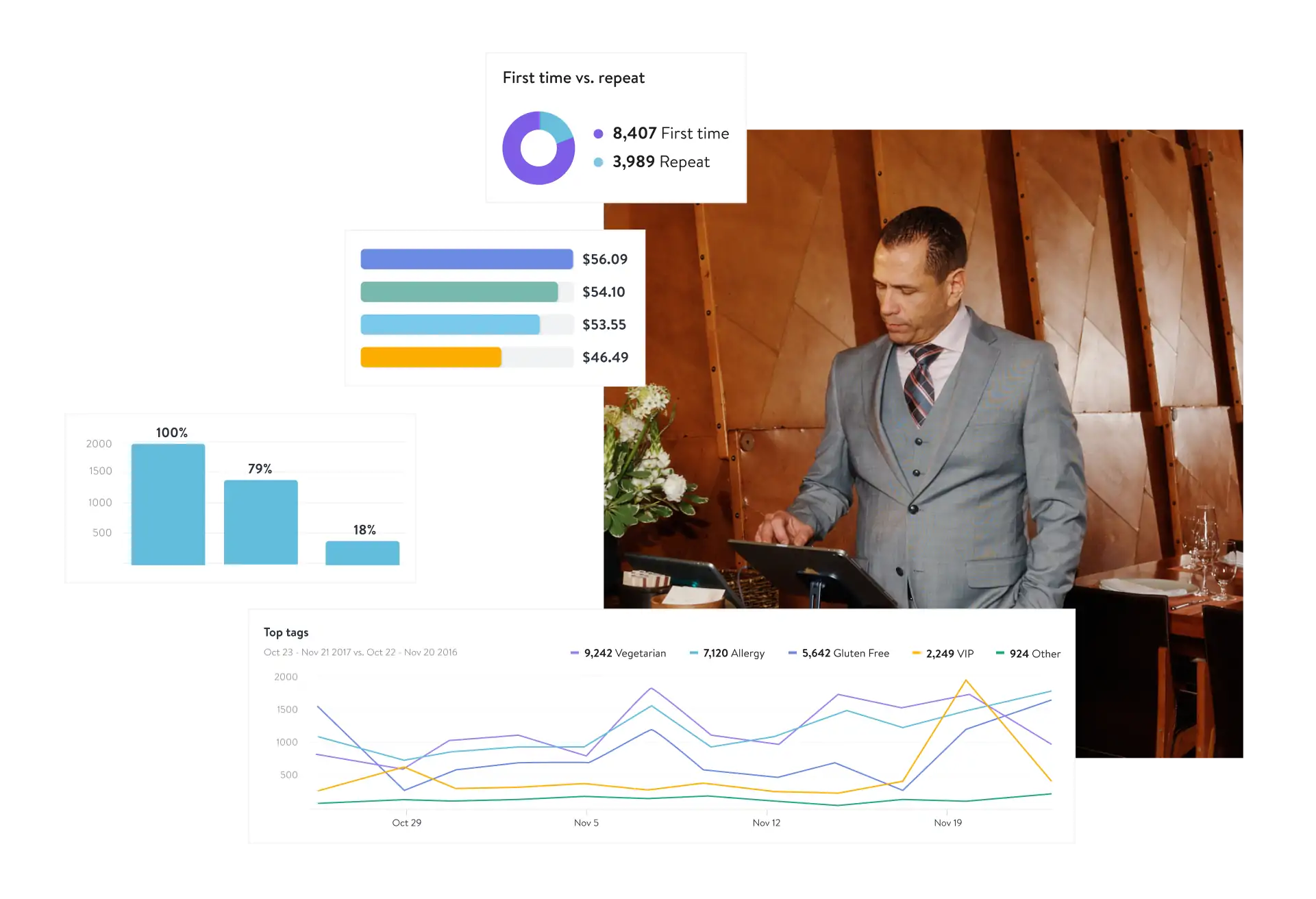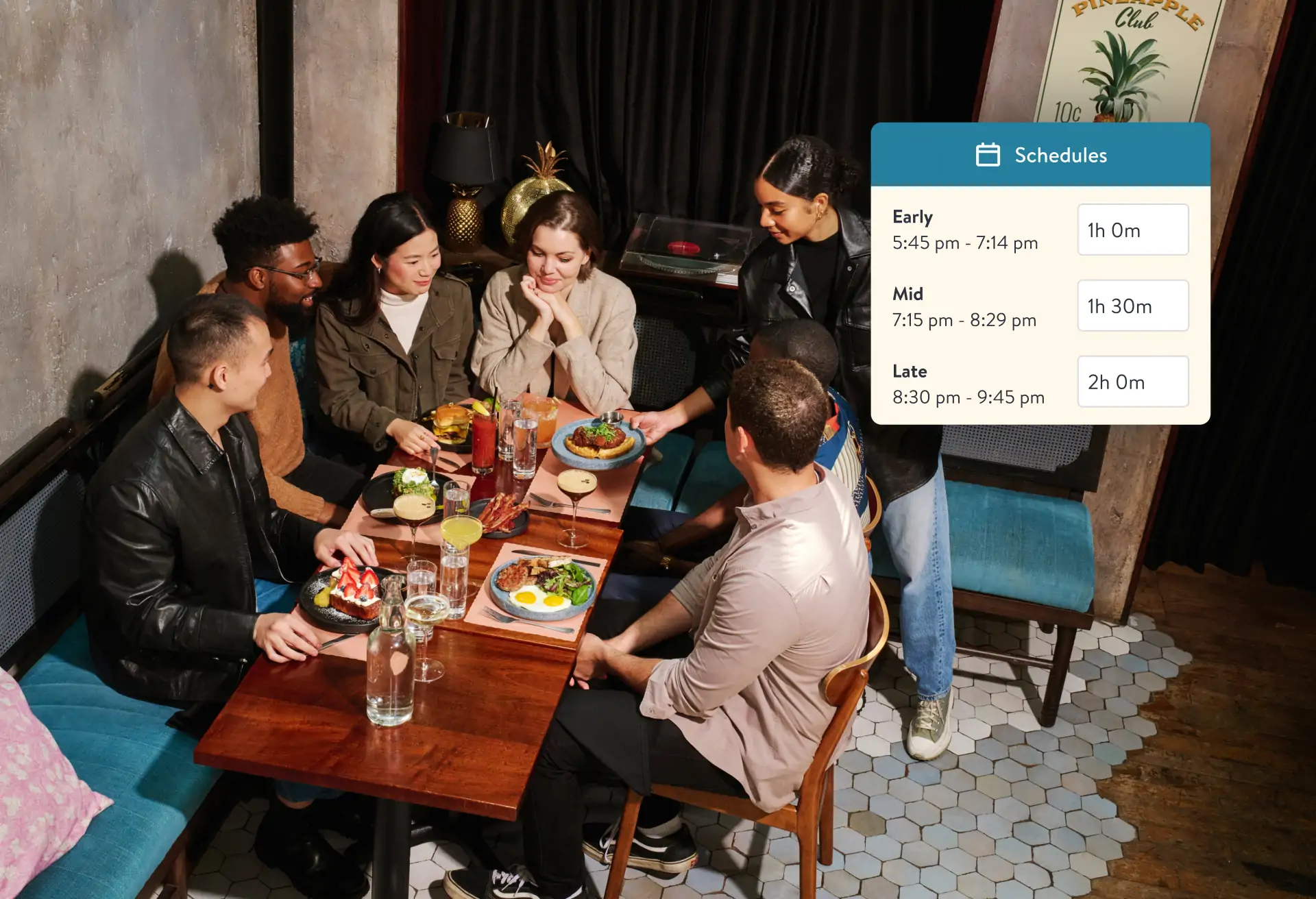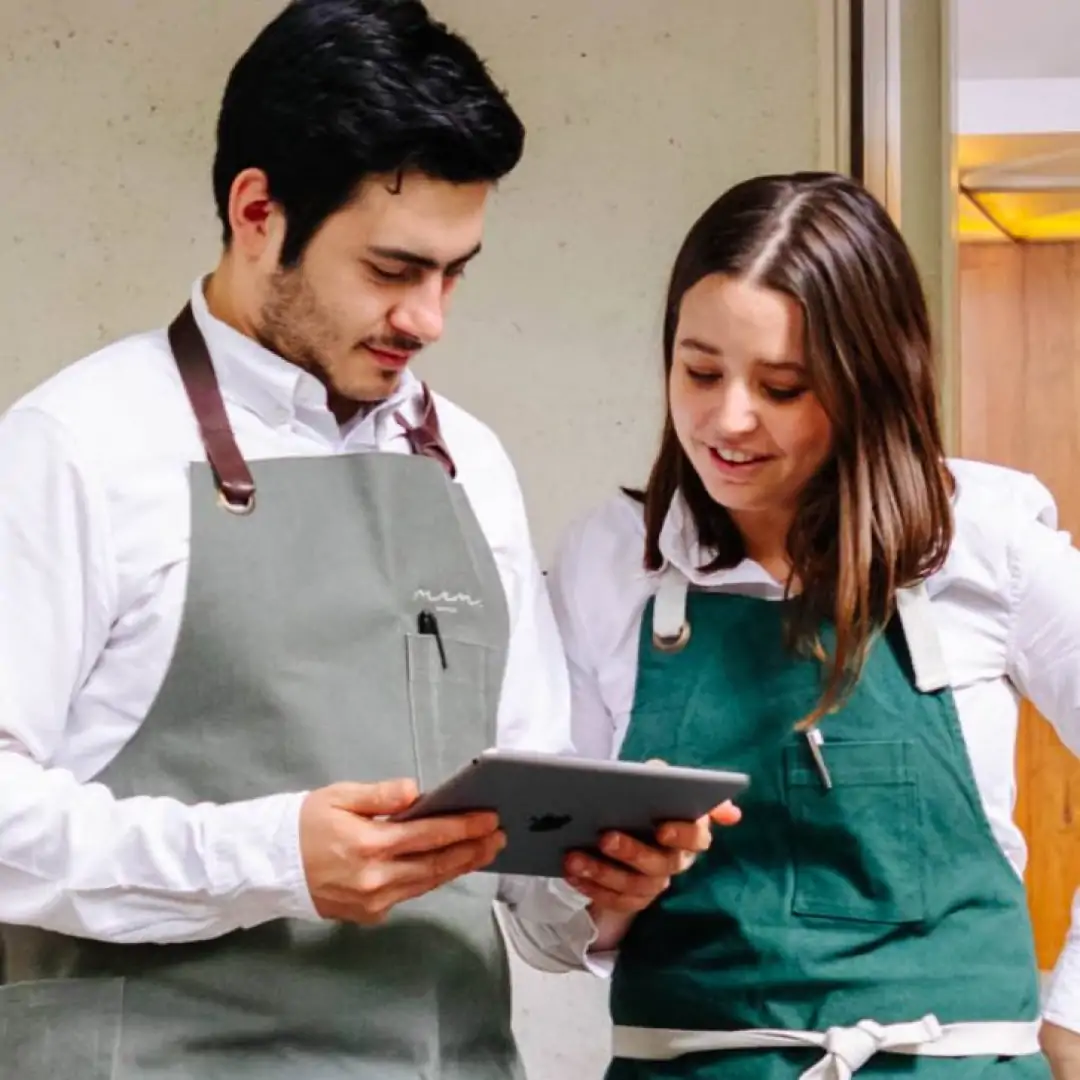Your reservation system is a goldmine of information just waiting to be tapped. Every time a guest books a table, you’re collecting data that can help you create a more personalized experience. But many restaurants let this valuable resource go to waste. If you want to make more out of your restaurant analytics and wow diners on a whole other level, this guide has all you need to know.
Tapping into the power of your reservation data
Start by digging into the basics. How often do guests visit? What’s their average party size? Do they tend to book for special occasions? This information gives you a solid foundation to build on. But don’t stop there, as the real magic happens when you start connecting the dots between different data points.
For example, you might notice that a particular guest always books a table for two on Friday nights. That’s interesting, but it becomes truly useful when you combine it with other information. Do they always order the same bottle of wine? Do they have any dietary restrictions? Have they ever mentioned a birthday or anniversary? Restaurant analytics help you build a more complete picture of your guest and their preferences.
Making the most of guest profiles
Think of guest profiles as your inside knowledge when it comes to winning repeat business. They’re where all that interesting reservation data comes together in one place. But a profile is only as good as the information you put into it.
Train your staff to be data experts in the context of your restaurant. Encourage them to note down any relevant information they pick up during service. Maybe a guest mentioned they’re allergic to shellfish, or they raved about a particular wine pairing. These little details can make a big difference the next time that guest visits.
Make sure your staff actually uses this information. There’s no point collecting restaurant analytics if it just sits there gathering dust. Before each shift, have your team review the profiles of guests who are coming in that day. This way, they can be prepared to offer personalized service right from the moment the guest walks in the door.

Tailoring the dining experience
Now that you’ve got all this great data, it’s time to put it to work. The goal is to make every guest feel like a VIP, whether it’s their first visit or their tenth.
Let’s say you know a guest is celebrating their anniversary. You could have a complimentary glass of champagne waiting at their table when they arrive. Or if you know a regular always orders the same appetizer, you could have it ready to go as soon as they’re seated.
But personalization isn’t just about freebies and special treatment. You’re anticipating needs and solving problems before they arise. If you know a guest has a gluten allergy, make sure your server points out all the gluten-free options on the menu. If a family always brings their kids, have crayons and coloring sheets ready at the table.
The goal is to be subtle. You want guests to feel like you remember them, not like you’re stalking them. A simple “Welcome back, Mr. Johnson. Would you like your usual table?” can go a long way to making your guests feel special and cared for.
Upselling with finesse
Personalization isn’t just good for the guest experience; it can work wonders for your bottom line too. When you know a guest’s preferences, you can make targeted upsell suggestions that are more likely to land.
Say you’ve got a guest who always orders red wine. When they come in, have your sommelier stop by their table to recommend a special vintage that’s just come in. Or if you know a diner loves dessert, have your server mention a new item on the dessert menu that you think they’d enjoy.
The trick is to make these suggestions feel like helpful recommendations, not pushy sales tactics. You’re not trying to squeeze every last dollar out of your guests. Instead, you’re enhancing their experience by introducing them to things you genuinely think they’ll enjoy.
Keeping the conversation going between visits
Your relationship with your guests doesn’t end when they walk out the door. Use your reservation data to keep in touch between visits and keep your restaurant top of mind while growing guest relationships.
Email marketing is a great way to do this, but only if you do it right. Generic emails about your latest specials aren’t going to cut it. Instead, use your data to send targeted, personalized emails that strike the right chords.
For example, you could send an email to all guests who’ve ordered seafood in the past three months, letting them know about a special seafood tasting menu you’re offering. Or reach out to guests who haven’t visited in a while with a personalized “We miss you” message and a special offer to entice them back.
Just remember to keep it relevant and not too frequent. You want to remind guests about your restaurant, not annoy them into unsubscribing.
Making the most of special occasions
Birthdays, anniversaries, and other special occasions are golden opportunities for personalization. These are the times when guests are looking to celebrate and are often willing to splurge a bit.
Use your restaurant data analytics to keep track of these dates. When a guest books a table for their birthday, make sure to note it in their profile. Then, next year, you can reach out a few weeks before with a special birthday offer.
But don’t limit yourself to just birthdays and anniversaries. Did a couple get engaged at your restaurant? Note it in their profile and make a fuss the next time they visit. These are the kinds of personal touches that turn one-time diners into lifelong guests.
Training your team for personalized service
All the data in the world won’t help if your staff doesn’t know how to use it. Training is crucial to make your personalization efforts successful.
Start by making sure everyone understands the importance of data collection and how to do it properly. Teach them how to add notes to guest profiles and what kind of information is most useful.
Next, train your staff on how to use this information to provide personalized service. Role-play different scenarios so they’re comfortable bringing up personal details in a natural, non-creepy way.
Finally, emphasize the importance of reading guest profiles before each shift. Make it a mandatory part of pre-shift meetings. The more your staff uses this information, the more second nature it will become.

Measuring the impact of personalization
Like any business strategy, you need to measure the results of your personalization efforts. Set up some key performance indicators (KPIs) to track your progress.
Look at metrics like repeat visit rate, average spend per guest, and satisfaction scores. You should see these numbers improve as you get better at personalization.
But don’t just rely on numbers. Pay attention to qualitative feedback too. Are guests mentioning your personalized touches in their reviews? Are they telling their friends about their restaurant guest experience? These are all signs that your efforts are paying off.
Respecting privacy and boundaries
While personalization has the ability to make a real difference, it’s important to respect guest privacy and boundaries. Some guests might not be comfortable with you collecting and using their data.
Be transparent about what information you’re collecting and how you’re using it. Give guests the option to opt out of data collection if they want to. And train your staff to be sensitive to guests who seem uncomfortable with personalized service.
The goal is to make guests feel special. Nothing more, nothing less. If you’re ever in doubt, err on the side of caution.
Staying ahead of the curve
The world of restaurant technology is always evolving, and so should your personalization strategy. Keep an eye on new trends and technologies that could help you take your efforts to the next level.
Maybe it’s a new CRM system that integrates with your POS for even deeper insights. Or perhaps it’s a mobile app that lets guests customize their experience before they even arrive. Whatever it is, be ready to adapt and innovate.
Make your reservation data count
At the end of the day, personalization is about creating connections. Make your guests feel seen, valued, and understood. When you get it right, you’re creating experiences that people will remember and talk about for years to come. So dive into your data, train your team, and start creating those personalized experiences.




